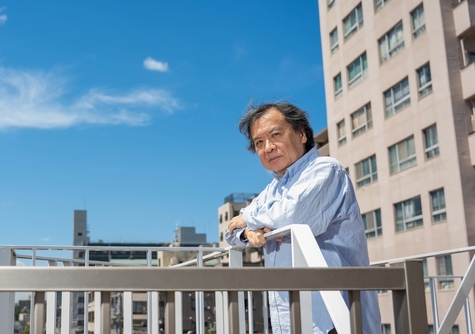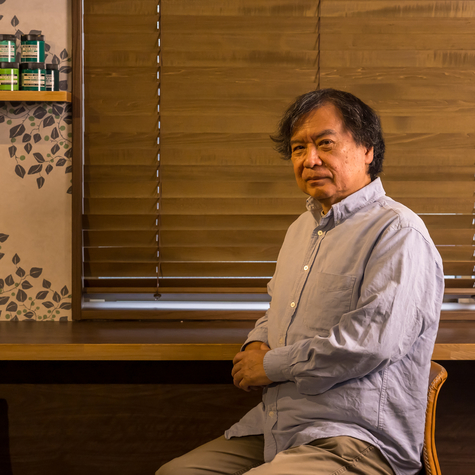Eighty Years On from the War: Memory and the Power of Culture
Dialogue through Animation: Interview with Sunao Katabuchi, Director of In This Corner of the World
2025.10.24
【Special Feature 086】
Set in the cities of Hiroshima and Kure during World War II, In This Corner of the World is a candid portrayal of the everyday lives of ordinary citizens. Since its release in 2016, the animated film has garnered widespread critical acclaim, with both domestic and international screenings, including at film festivals organized by the Japan Foundation (JF).
In 2025, the film is being rereleased across Japan to mark the eightieth anniversary of the end of World War II. In the following interview, we spoke with film director Sunao Katabuchi as he reflects on the film following the praise it has received both in Japan and abroad. Speaking as someone who did not experience the war, he considers how to portray wartime everyday life and how those born after the war can come to terms with the past and pass down knowledge of it.
Wartime Life, Re-Created by a Generation That Never Lived Through War
- ──In This Corner of the World depicts daily life during World War II through its protagonist, Suzu. Why focus on everyday life?
- Those who experienced World War II firsthand were deeply affected by the devastation caused by air raids and the atomic bombings. It is essential for the generations who have never lived through war to understand the daily lives of ordinary people during that time. Otherwise, we may never be able to fully grasp the true meaning of what was lost in the subsequent destruction.
To understand the fact that entire towns were reduced to ashes in just one night due to air raids, I believe it is important to also pay attention to the ordinary daily lives that must have continued up until that moment. Doing so leads to a deeper understanding of the true nature of war.
This film had to be produced as an animation because we needed to depict Suzu's home and the naval base within a single setting in Kure, so they would be part of one continuous reality. I believe that with the power of animation it is possible to show both everyday life and war existing in the same space--scenes of people hanging out laundry within sight of the warship Yamato--in a way that allows viewers to process what they are seeing naturally.
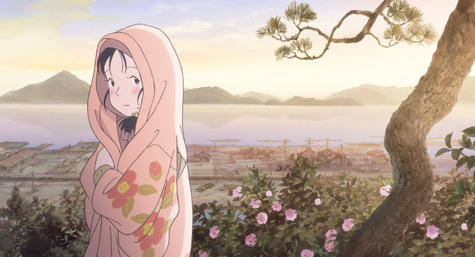 The protagonist Suzu is visited by Shusaku, a young man seeking her hand in marriage. Dressed in a kimono made for her by her grandmother, Suzu reflects on her life and how she has been left with no choice but to marry at a young age. © 2019 Fumiyo Kouno, Coamix / In This Corner of the World Productions
The protagonist Suzu is visited by Shusaku, a young man seeking her hand in marriage. Dressed in a kimono made for her by her grandmother, Suzu reflects on her life and how she has been left with no choice but to marry at a young age. © 2019 Fumiyo Kouno, Coamix / In This Corner of the World Productions - ── It's as if you wanted to convey the reality of war by showing how people's everyday lives endured, and also how they changed. The film has now been screened around the world, including at international cultural events and film festivals organized by the Japan Foundation. How have international audiences reacted to it?
- When I spoke with people from outside Japan about this project prior to production, many seemed to be particularly interested in how Japanese women lived during the war.
I myself have had the opportunity to travel to Mexico, France, the US, and other countries and to speak directly with audiences there. I was struck by how perceptions of war varied among viewers from different countries. One French viewer of Cambodian descent told me that the film reminded them of stories their parents had told them of life before the Cambodian genocide. A viewer from Iran said that it reminded them of their experience of war as a child. We tend to think of war as something that happened eighty years ago, but I was deeply moved to hear people's differing perceptions of it.
Yet many audiences came away with a positive view of Suzu's lifestyle, in spite of her simply acting in accordance with the government's wartime propaganda. In hindsight, it might have been better, particularly for overseas screenings, to provide additional material on the historical and social context of the story.
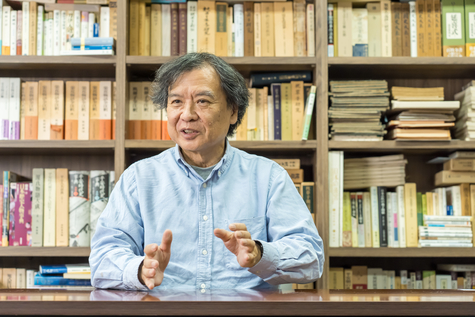 Movies have been an integral part of Katabuchi's life since childhood--his grandfather ran a movie theater in Hirakata City, Osaka Prefecture. Since the release of In This Corner of the World, he has visited over 160 movie theaters across Japan, often greeting audiences on stage. He has also traveled internationally to promote the film, meeting fans and attending screenings at film festivals in South Korea and France.
Movies have been an integral part of Katabuchi's life since childhood--his grandfather ran a movie theater in Hirakata City, Osaka Prefecture. Since the release of In This Corner of the World, he has visited over 160 movie theaters across Japan, often greeting audiences on stage. He has also traveled internationally to promote the film, meeting fans and attending screenings at film festivals in South Korea and France. - ── Did you feel that some aspects of the story were not fully understood or appreciated outside Japan, whether due to cultural or historical differences?
- Actually, I felt that even in Japan there were few who deeply appreciated the story's background. With overseas audiences, I felt this all the more, and I realized that film screenings alone aren't enough. I feel that it's necessary to work with organizations such as the Japan Foundation to accurately convey historical and cultural context to audiences, thereby ensuring that they have a proper understanding of the film.
There is a scene in the movie, for example, in which Suzu prepares a meal using wild plants during a food shortage. Many viewers saw this as a good example of resourcefulness. In fact, she was simply following government policy, which encouraged the consumption of wild plants. This was also the case for nanko meshi*, a dish that can be made without using a lot of rice. I believe that without an understanding of the real-life conditions of the story's setting, viewers may find it difficult to fully grasp the reason Suzu cries at the end of the film.
There are many other scenes in which we deliberately avoid explaining certain details to viewers. Like the original author, Fumiyo Kouno, I was born after the war, and precisely for that reason I'm acutely aware that people of our generation tend to take limited, pre-filtered information at face value. I wanted readers and viewers to adopt a different stance: not to trust hearsay, but to seek out the sources themselves. That is why, within the work, we intentionally avoid explicit explanations and leave room for audiences to return to the record and think for themselves.
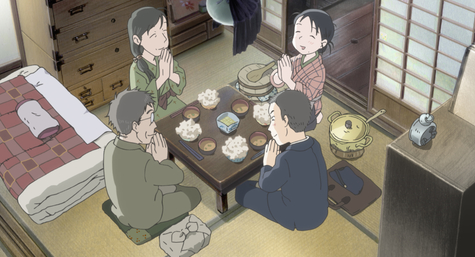 Suzu and her in-laws sit at the dinner table, about to eat the nanko meshi she has prepared. This scene demonstrates how people lived in a time of rationing and food shortages, as they adapted to wartime circumstances. © 2019 Fumiyo Kouno, Coamix / In This Corner of the World Productions
Suzu and her in-laws sit at the dinner table, about to eat the nanko meshi she has prepared. This scene demonstrates how people lived in a time of rationing and food shortages, as they adapted to wartime circumstances. © 2019 Fumiyo Kouno, Coamix / In This Corner of the World Productions - ── Your words may come as a corrective of sorts for the current generation, who tends to absorb information passively and pass it along as "fact."
- Yes. I think that rather than interpreting scenes as merely entertaining or tragic, viewers should examine what was revealed in the film and also consider what was left unsaid, in order to get a deeper understanding of the reality of wartime.
2I started this project in 2010 and feel that the way people process information has changed over the past 15 years. It could be said that the mindset of today's generation is becoming similar to that of Suzu during the war--often simply believing what they are told rather than thinking critically or doing their own research.
The late film critic Tadao Sato, who lived through World War II, said the film "truly captured the atmosphere of the time, showing how people adapted to circumstances unquestioningly." Those of us born after the war need to do more than just passively consume the story if we want to truly understand the atmosphere and mindset of that time period. We need to actively engage with it in order to fully understand it."
Understanding the Messages Left Behind for Us and Imparting Knowledge of the War to Future Generations
- ── In Japan, there are fewer and fewer people with lived experience of the war. What are your thoughts about passing down memories of the war to younger generations?
- I don't believe it's really possible to pass down memories to those who did not experience the events firsthand. Memories belong only to those who lived through the experiences themselves.
Those of us who have known Japan only during peacetime don't truly understand the experiences described by the words left behind for us. Rather than being satisfied with a superficial look at these messages, we need to delve deeper to understand the world they came from and what was actually happening at the time. It is only by examining and comparing firsthand accounts, archival footage, and other evidence from an earlier time that we can truly come to understand the messages that have been left for us.
Furthermore, it may be necessary to expand our perspective of the war beyond that of Japan--for example, by considering the experiences of other countries involved in World War II, such as Great Britain and Germany. In this way, we may be able to gain a different, more objective view of Japan's own experience during the war.
I'm currently working on a new animated film titled The Mourning Children: Nagiko and the Girls Wearing Tsurubami Black. It's based on the Heian-period classic The Pillow Book (ca. 996-1003) and set in Japan more than a millennium ago. If I am correct in saying that expanding our knowledge by using actual evidence from an earlier time can deepen our understanding of messages from the past, I believe this would enhance our appreciation of past events, no matter how far back in time they took place."
- *Nanko meshi (nanko rice) is reputedly the invention of Masashige Kusunoki, a legendary military commander said to be active in the Minamikawachi area from the end of the Kamakura period through the Nanbokucho period. Its preparation involved soaking roasted brown rice in water overnight and then further cooking it to increase its volume. In In This Corner of the World, people are shown cooking and eating rice with the bran left on, in line with a wartime policy that counted the bran toward the ration in an attempt to conceal its true weight--something many accepted at face value.
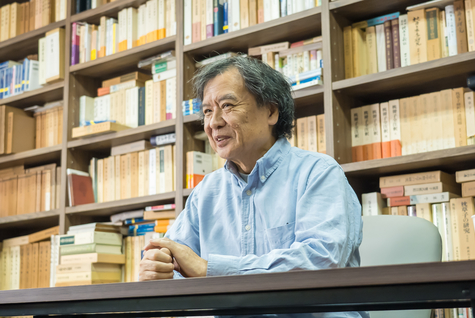 Katabuchi's extensive research included not only analyzing books and maps but also studying clothing trends, hairstyles, and even the flight paths of fighter planes at the time. Deducing the feelings of people of the past through research and the study of how they lived has remained central to his work. The bookshelves in his study are filled with research materials essential to his creative process.
Katabuchi's extensive research included not only analyzing books and maps but also studying clothing trends, hairstyles, and even the flight paths of fighter planes at the time. Deducing the feelings of people of the past through research and the study of how they lived has remained central to his work. The bookshelves in his study are filled with research materials essential to his creative process. In This Corner of the World
Released in 2016. Original story by Fumiyo Kouno; written and directed by Sunao Katabuchi; produced by MAPPA Co., LTD; distributed by TOKYO THEATRES COMPANY Inc. Initially screened at a cumulative total of 484 theaters (as of October 2019), it set Japan's record for the longest continuous theatrical run at 1,133 days. Total admission reached 2.1 million, and box-office revenue exceeded 2.7 billion yen--a remarkable achievement for an independent film. It was also released in over sixty countries and regions worldwide. In 2019, an extended version called In This Corner (and Other Corners) of the World was released with additional footage. In 2025, to mark the eightieth anniversary of the end of World War II, it was rereleased in theaters across Japan. Screenings sponsored by the Japan Foundation took place at the Japanese Film Festival 2017, commemorating the 130th anniversary of Thailand-Japan diplomatic relations; the Japanese Animation and Lifestyle Film Festival (Estonia, 2018); and an online screening co-hosted by the Japanese Canadian Cultural Centre (2020). The film has moved audiences across the world, eliciting statements such as: "An excellent depiction of the horrors of war, illustrating that it must never be allowed to happen anywhere."https://konosekai.jp/
●Related Articles
Movie Theaters around the World <1> Manga Artist Amashima Denki's Trip to India Suzume in India
Japonismes 2018: les âmes en résonance The harmony of Japanese and French culture
Keywords
Back Issues
- 2025.10.24 Eighty Years On from…
- 2025.6. 9 Creating a World Tog…
- 2024.10.25 My Life in Japan, Li…
- 2024.5.24 The 50th Japan Found…
- 2024.5.24 The 50th Japan Found…
- 2024.5. 2 People-to-People Exc…
- 2024.5. 2 People-to-People Exc…
- 2023.12. 7 Movie Theaters aroun…
- 2023.6.16 The 49th Japan Found…
- 2023.4.24 The 49th Japan Found…


